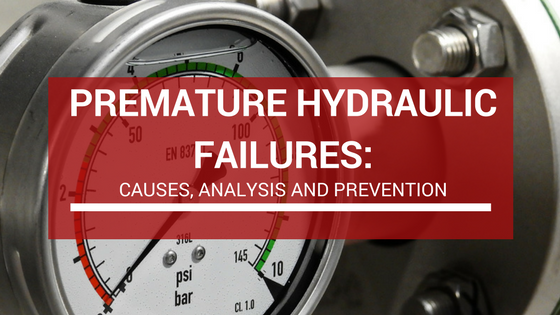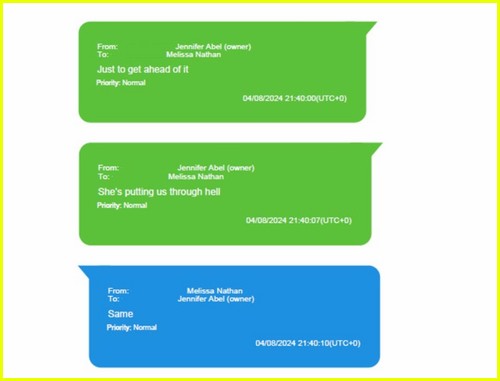Air Traffic Control System Failures: Causes, Consequences, And Prevention Strategies

Table of Contents
Causes of Air Traffic Control System Failures
Air traffic control system failures stem from a complex interplay of technological glitches, human error, and environmental factors. Understanding these root causes is the first step towards implementing effective preventative measures.
Technological Failures
Modern ATC systems are sophisticated networks relying on intricate software and hardware. Failures can arise from several sources:
- Software glitches and bugs: Outdated software, insufficient testing during development, and integration challenges between different systems can lead to unpredictable malfunctions. The complexity of modern ATC software makes thorough testing extremely difficult, increasing the risk of undiscovered bugs manifesting in operational environments.
- Hardware malfunctions: Radar system failures, communication system breakdowns (including voice communication and data links), and power outages can cripple ATC operations, potentially causing significant disruptions and safety hazards. Aging infrastructure contributes to increased hardware failure rates.
- Cybersecurity threats: ATC systems are increasingly vulnerable to cyberattacks, with potential consequences ranging from data breaches to complete system shutdowns. Hackers could disrupt air traffic flow, manipulate flight data, or even cause collisions. Robust cybersecurity measures are crucial to mitigate these risks.
For example, a 2015 incident at the Federal Aviation Administration (FAA) saw a software glitch cause widespread ground delays across the US. This exemplifies the impact of even minor software errors on the entire system.
Human Error
Despite technological advancements, human factors remain a significant contributor to ATC failures.
- Controller fatigue and stress: The demanding nature of air traffic control, involving high-pressure decision-making and constant vigilance, can lead to controller fatigue and stress. Burnout can impair judgment and increase the likelihood of errors.
- Lack of training and inadequate procedures: Insufficient training, outdated procedures, and a lack of standardized protocols can significantly increase the risk of human error. Comprehensive, regular training and realistic simulations are essential to prepare controllers for various scenarios.
- Communication breakdowns: Miscommunication between controllers, pilots, and other personnel can have severe consequences. Ambiguous instructions or misunderstandings can lead to near-misses or collisions. Clear, concise, and standardized communication protocols are vital.
A well-documented example of human error involved an air traffic controller's lapse in attention resulting in a runway incursion. Such incidents highlight the need for constant vigilance and effective fatigue management strategies.
Environmental Factors
External environmental factors can also impact ATC system performance and contribute to failures.
- Severe weather conditions: Heavy snow, rain, fog, or strong winds can impair radar performance, disrupt communication signals, and reduce visibility, affecting the safe and efficient management of air traffic.
- Natural disasters: Earthquakes, floods, hurricanes, and other natural disasters can damage ATC infrastructure, leading to extended outages and system failures. Robust infrastructure design and disaster recovery plans are necessary to mitigate such risks.
For instance, severe thunderstorms can cause temporary or complete radar outages, necessitating the implementation of contingency plans and alternative methods for managing air traffic.
Consequences of Air Traffic Control System Failures
The consequences of ATC system failures are multifaceted and far-reaching, impacting safety, economics, and reputation.
Safety Risks
The most critical consequence is the increased risk to aviation safety:
- Near misses and collisions: ATC failures directly increase the likelihood of near misses and even mid-air collisions, potentially resulting in catastrophic accidents and loss of life.
- Ground delays and flight cancellations: System failures lead to widespread delays, cancellations, and diversions, causing significant disruption to air travel.
- Passenger inconvenience and anxiety: Passengers face delays, missed connections, and significant inconvenience, alongside heightened anxiety concerning flight safety.
Economic Impact
The economic impact of ATC system failures can be substantial:
- Cost of repairs and replacements: Repairing or replacing damaged equipment and software can be extremely expensive.
- Lost revenue for airlines: Delays and cancellations result in substantial financial losses for airlines due to lost ticket sales, fuel costs, and operational inefficiencies.
- Insurance claims and legal liabilities: Airlines and ATC providers may face costly insurance claims and legal liabilities following accidents or incidents caused by system failures.
Reputational Damage
ATC failures can severely damage the reputation of the aviation industry:
- Loss of public trust: Incidents caused by system failures erode public confidence in the safety and efficiency of air travel.
- Impact on tourism and travel: Negative publicity surrounding ATC failures can deter travelers and negatively impact the tourism industry.
Prevention Strategies for Air Traffic Control System Failures
Mitigating the risks associated with ATC system failures requires a multi-pronged approach:
Technological Advancements
Investing in advanced technologies is crucial for enhancing the reliability and resilience of ATC systems:
- Investing in advanced technologies: Redundant systems, backups, and fail-safe mechanisms are essential to ensure that the system continues to function even in the event of partial failure. This includes implementing robust data center infrastructure and geographically diverse backup sites.
- Regular software updates and maintenance: Regular software updates, rigorous testing, and proactive maintenance are essential to minimize the risk of software glitches and bugs.
- Cybersecurity measures: Implementing robust cybersecurity measures, including firewalls, intrusion detection systems, and regular security audits, is vital to protect ATC systems from cyberattacks.
Human Factors Mitigation
Addressing human factors is crucial in preventing ATC failures:
- Improved training and education: Advanced training programs, realistic simulations, and stress management techniques can help controllers develop the skills and resilience to handle high-pressure situations.
- Workforce management strategies: Effective workforce management strategies, including optimal scheduling, sufficient rest periods, and appropriate staffing levels, are essential to mitigate controller fatigue and stress.
- Enhanced communication protocols: Improving communication protocols, standardizing terminology, and implementing clear procedures can minimize the risk of miscommunication and errors.
Infrastructure Improvements
Strengthening ATC infrastructure is crucial to enhance its resilience:
- Redundant systems and backup facilities: Building redundant systems and backup facilities ensures that air traffic control operations can continue even in the event of a primary system failure.
- Strengthening infrastructure against natural disasters: Designing and building ATC infrastructure to withstand natural disasters, alongside implementing robust disaster recovery plans, is crucial to minimize disruption following such events.
Conclusion
Air traffic control system failures pose significant safety, economic, and reputational risks. The causes are complex, involving a combination of technological issues, human error, and environmental factors. Preventing these failures requires a comprehensive strategy involving technological advancements, human factors mitigation, and infrastructure improvements. By investing in robust and reliable systems, enhancing training and communication, and strengthening infrastructure, we can significantly reduce the risk of air traffic control system failures and ensure the continued safety and efficiency of air travel. Learn more about aviation safety initiatives through organizations like EUROCONTROL and the FAA to advocate for continued improvements and prevention of future air traffic control system failures.

Featured Posts
-
 The Sound Perimeter Effect How Music Creates Community
May 22, 2025
The Sound Perimeter Effect How Music Creates Community
May 22, 2025 -
 Blake Lively Allegedly Examining Recent News And Reports
May 22, 2025
Blake Lively Allegedly Examining Recent News And Reports
May 22, 2025 -
 Thursdays Core Weave Crwv Stock Decline A Detailed Explanation
May 22, 2025
Thursdays Core Weave Crwv Stock Decline A Detailed Explanation
May 22, 2025 -
 How Aimscap Is Changing The World Trading Tournament Wtt
May 22, 2025
How Aimscap Is Changing The World Trading Tournament Wtt
May 22, 2025 -
 Fbi Investigating Millions In Losses From Executive Office365 Hack
May 22, 2025
Fbi Investigating Millions In Losses From Executive Office365 Hack
May 22, 2025
Latest Posts
-
 Wordle 370 March 20th Hints Clues And Answer
May 22, 2025
Wordle 370 March 20th Hints Clues And Answer
May 22, 2025 -
 Wordle 370 Hints And Answer For Thursday March 20th
May 22, 2025
Wordle 370 Hints And Answer For Thursday March 20th
May 22, 2025 -
 Wordle Hints And Answer Saturday March 8th Game 1358
May 22, 2025
Wordle Hints And Answer Saturday March 8th Game 1358
May 22, 2025 -
 Wordle 1358 March 8th Hints And Solution
May 22, 2025
Wordle 1358 March 8th Hints And Solution
May 22, 2025 -
 Nyt Wordle Answer March 26 Difficulty And Solution
May 22, 2025
Nyt Wordle Answer March 26 Difficulty And Solution
May 22, 2025
